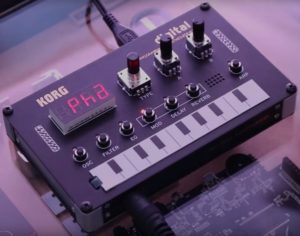This post is a welcome escape from the mental anguish of cleaning, packing, moving, etc.
A member of the YamahaSynth.com MODX forum asked for help in obtaining a particular guitar tone for Rock/Metal. I confess that Metal is not a genre that I dip into and I was somewhat at a loss to help out. Fortunately, the chap posted a link to a video with an example of the kind of tone he was looking for:
He noted the smoothness of the distorted tone. His attempts to achieve this tone on MODX led to “waves” that were “almost like the strings are not perfectly in tune”, for example, when hitting a power chord.
I passed along links to my two articles about guitar waveforms and effects on MODX (Montage) and Genos:
I wrote these articles when I was trying to achieve Ian Bairnson’s tone during his 1970s Alan Parsons era. Maybe the info would help out.
Folks on the YamahaSynth thread suggested the Telecaster (TC) waves, but I wasn’t so sure. A Telecaster is a single coil guitar and is not used all that frequently in Metal or Heavy Rock — a dual coil (humbucker) is more likely. The typical examples of type are the Gibson Les Paul and SG models (P90 pick-ups). Of course, it still comes down to the MODX factory waveforms and whatever works in a given situation without regard for the actual source instrument.
Well, not being familiar with Ratt meant a little Internet digging. The two guitarists in Ratt of the “Lay It Down” era were Warren DeMartini and Robbin Crosby. Thankfully, guitarists are obsessive about gear and tone, and it was relatively easy to find information about DeMartini’s kit. Demartini is well-known for his smooth tone, so I dug into his gear. I’ll leave Robbin Crosby as an exercise for the reader. 🙂
DeMartini was fond of playing a Charvel superstrat with a Floyd Rose bridge and Seymour Duncan JB humbucker (dual coil) pick-ups. “Superstrat” in this context does not necessarily mean “Fender.” “Superstrat” is used somewhat generically to mean a guitar which is similar to a Stratocaster, but customized in one or more significant ways. Standard Stratocasters typically employ single coil pick-ups, so humbuckers are already a major departure from the original design.
In later days, DeMartini used Seymour Duncan Quarter Pounder and DeMartini Custom Signature RTM (dual coil) pick-ups. All of these pick-ups have big magnets that interact with the strings as well as pick-up vibrations. Those big magnets mechanically damp the strings. Thus, the Custom Signature RTM pick-up “compresses to make evey note smooth and balanced.”
The whole sampling business raises an even larger question. Customizations aside, a multi pick-up guitar can be configured in a nearly infinite number of ways. What pick-ups are switched in or out? How is the tone knob set? Where are the strings plucked? (Near the bridge? The neck? Somewhere in between?) Does the player employ any special technique?
A sampled waveform is just one configuration of all these factors and more! Thus, the MODX waveforms cover an extremely small corner of a very large sound space.
Moving on from the instrument, DeMartini preferred Marshall amplifiers (heads) and cabinets. Marshall heads include JCM800/900, Plexi and JCM2000. He preferred 1960AX (4×12) cabinets: two with Celestion Vintage 30 speakers and two with 25W Celestion Greenbacks. Thus, I would look to the BRITISH LEAD or BRITISH LEGEND DSP effect algorithms and dial in the BS 4×12 speaker type as a starting point. One Web article mentioned that DeMartini often turned down the bass drastically and that might be worth a try, too.
When you need a particular guitar tone, I recommend a little bit of Internet research for inspiration.
Copyright © 2019 Paul J. Drongowski

